-
 Bitcoin
Bitcoin $109,459.7682
2.44% -
 Ethereum
Ethereum $2,598.6052
6.29% -
 Tether USDt
Tether USDt $1.0003
0.00% -
 XRP
XRP $2.2734
3.95% -
 BNB
BNB $661.4886
1.58% -
 Solana
Solana $155.4825
4.35% -
 USDC
USDC $0.9999
-0.02% -
 TRON
TRON $0.2838
1.04% -
 Dogecoin
Dogecoin $0.1740
8.25% -
 Cardano
Cardano $0.6047
9.04% -
 Hyperliquid
Hyperliquid $40.2302
6.50% -
 Sui
Sui $2.9863
10.05% -
 Bitcoin Cash
Bitcoin Cash $509.5786
0.60% -
 Chainlink
Chainlink $13.8156
6.03% -
 UNUS SED LEO
UNUS SED LEO $9.0142
0.69% -
 Avalanche
Avalanche $19.0337
8.68% -
 Stellar
Stellar $0.2438
5.17% -
 Toncoin
Toncoin $2.9012
3.59% -
 Shiba Inu
Shiba Inu $0.0...01210
6.20% -
 Litecoin
Litecoin $90.0882
7.05% -
 Hedera
Hedera $0.1597
8.53% -
 Monero
Monero $326.3340
2.88% -
 Polkadot
Polkadot $3.6365
9.32% -
 Bitget Token
Bitget Token $4.6162
2.72% -
 Dai
Dai $1.0001
0.00% -
 Ethena USDe
Ethena USDe $1.0002
-0.01% -
 Uniswap
Uniswap $7.6403
10.47% -
 Pepe
Pepe $0.0...01060
12.03% -
 Aave
Aave $281.3664
7.56% -
 Pi
Pi $0.4992
1.76%
What is a crypto airdrop?
Crypto airdrops distribute free tokens to promote projects, reward holders, and boost decentralization, often requiring wallet compatibility and meeting eligibility criteria.
Jul 03, 2025 at 02:00 am
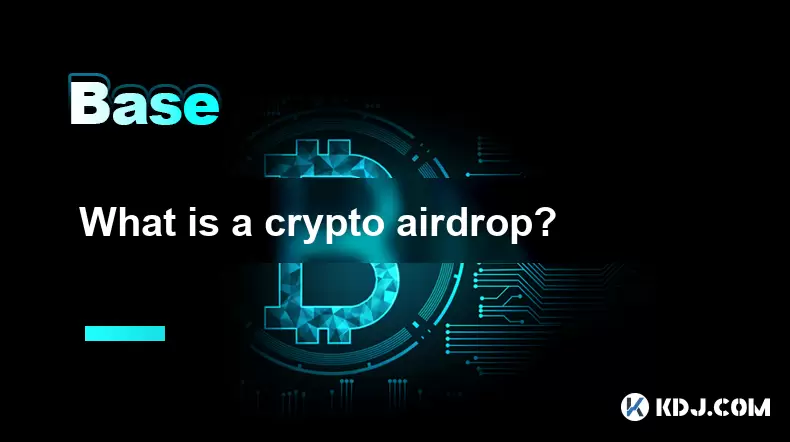
Understanding the Concept of a Crypto Airdrop
A crypto airdrop refers to the distribution of free cryptocurrency tokens or coins to a large number of wallet addresses. This practice is commonly used by blockchain projects to promote awareness, encourage adoption, and distribute tokens in a decentralized manner. Typically, these airdrops occur during the early stages of a project’s lifecycle, especially when launching a new token on the market.
The mechanism behind a crypto airdrop can vary depending on the goals of the project team. In some cases, users receive tokens automatically if they hold a specific cryptocurrency at the time of a snapshot. For example, if a new token is being launched on the Ethereum network, holders of ETH might be eligible for airdropped tokens based on their balance. In other cases, users may need to perform certain actions like joining a Telegram group, following social media accounts, or signing up on a platform to qualify for the airdrop.
How Do Crypto Airdrops Work?
Crypto airdrops are usually conducted through smart contracts or centralized platforms that manage the distribution process. The first step involves setting criteria for eligibility. Projects often publish these requirements on their official websites or community channels.
- Wallet compatibility plays a crucial role in receiving airdropped tokens. Users must ensure they use wallets supported by the project—commonly MetaMask, Trust Wallet, or Ledger.
- Snapshot date is another important factor. On this predetermined date, the blockchain records wallet balances to determine who qualifies for the airdrop.
- Some airdrops require active participation, such as completing KYC (Know Your Customer) verification or engaging with the project's social media.
Once the conditions are met, the tokens are sent directly to eligible wallets. It’s essential to remain vigilant about scams, as fraudulent airdrops often mimic legitimate ones to steal private keys or personal information.
Reasons Behind Conducting Airdrops
Blockchain projects conduct airdrops for several strategic reasons. One primary goal is to increase visibility and user base. By offering free tokens, projects attract attention and encourage people to engage with their ecosystem.
Another reason is to achieve fair token distribution. Instead of concentrating tokens among a few investors or insiders, airdrops help spread ownership across a broader audience, promoting decentralization.
Projects also use airdrops to test network activity before a full launch. When users receive tokens, they are more likely to interact with the platform, helping developers identify bugs or usability issues.
Additionally, airdrops can serve as incentives for loyalty. Existing holders of a blockchain network may receive tokens from a newly launched decentralized application (dApp) built on that chain, rewarding long-term support.
Types of Crypto Airdrops
There are various types of airdrops, each tailored to different objectives and participant engagement levels.
- Standard airdrops involve automatic distribution based on wallet holdings. No action is required beyond holding the qualifying asset.
- Bounty airdrops require participants to complete tasks such as sharing posts on social media, referring friends, or writing reviews.
- Exclusive airdrops target specific groups like early adopters, contributors, or members of particular communities.
- Holder airdrops reward users who hold a specific cryptocurrency over a defined period.
Each type has its own set of rules and conditions. Understanding these differences helps users maximize their chances of receiving tokens without falling victim to phishing attempts or fake airdrops.
How to Participate in a Crypto Airdrop Safely
Participating in a crypto airdrop requires caution and due diligence. Here’s how to do it safely:
- Always verify the legitimacy of the project by checking its whitepaper, development roadmap, and team background.
- Use a dedicated wallet for airdrops instead of your main wallet to reduce exposure to potential threats.
- Never share your private keys or seed phrases, even if asked during the registration process.
- Be wary of unsolicited messages claiming to offer airdrops. Scammers often impersonate real projects to extract sensitive data.
- Follow official communication channels like GitHub, Discord, and verified Twitter accounts to stay updated on genuine airdrop opportunities.
By adhering to these practices, users can participate in airdrops while minimizing risks associated with fraud or malicious activities.
Frequently Asked Questions (FAQ)
Q: Can I sell airdropped tokens immediately?
Yes, once the tokens are received in your wallet, you can transfer them to a compatible exchange and sell them if there’s trading availability. However, some projects impose lock-up periods or vesting schedules.
Q: Are airdropped tokens taxable?
Tax regulations regarding airdropped tokens vary by jurisdiction. In many countries, receiving tokens is considered taxable income at the time of receipt. Consult a tax professional for guidance based on your location.
Q: How do I know if I’m eligible for an airdrop?
Eligibility details are usually published on the project’s official website or social media. You can also use blockchain explorers to check if you held the required cryptocurrency during the snapshot period.
Q: Why didn’t I receive the airdropped tokens even though I met the requirements?
Several factors could affect eligibility, including incorrect wallet address submissions, failure to meet minimum balance thresholds, or missing deadlines. Contact the project’s support team for clarification.
Disclaimer:info@kdj.com
The information provided is not trading advice. kdj.com does not assume any responsibility for any investments made based on the information provided in this article. Cryptocurrencies are highly volatile and it is highly recommended that you invest with caution after thorough research!
If you believe that the content used on this website infringes your copyright, please contact us immediately (info@kdj.com) and we will delete it promptly.
- Crypto Summer Buys: Is Shiba Inu Out, and What's In?
- 2025-07-03 18:30:12
- Bitcoin, Solaris Presale, and Coin Watch: Catching the Next Wave
- 2025-07-03 19:10:11
- BONK ETF Buzz: Catalyst for a Meme Coin Moonshot?
- 2025-07-03 19:50:12
- Sui Coin, Bitcoin Solaris, and the Presale Opportunity: Catching the Next Wave
- 2025-07-03 19:50:12
- Sui Coin, Bitcoin Solaris, and Presale Opportunities: What's the Buzz?
- 2025-07-03 19:55:14
- MEXC's Bitcoin Reserves: A Fortress of Asset Coverage
- 2025-07-03 19:55:14
Related knowledge

What is open interest in derivatives?
Jul 03,2025 at 02:49pm
Understanding Open Interest in DerivativesOpen interest is a critical metric used in the cryptocurrency derivatives market, particularly when analyzing futures and options contracts. It represents the total number of outstanding contracts that have not been settled or closed by either party involved. Unlike trading volume, which counts all trades made i...
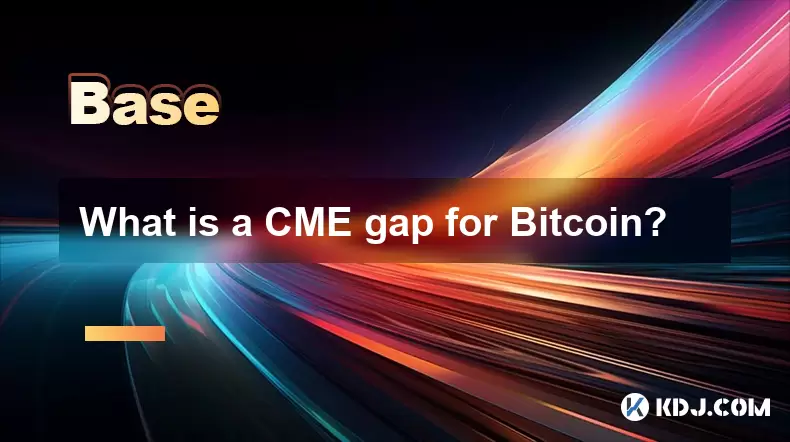
What is a CME gap for Bitcoin?
Jul 03,2025 at 05:49pm
Understanding the Concept of a CME GapA CME gap refers to a discrepancy in price between the closing price of Bitcoin on the Chicago Mercantile Exchange (CME) and its opening price when trading resumes. This phenomenon occurs because the CME operates during specific hours, typically aligned with traditional market hours, while cryptocurrency markets ope...
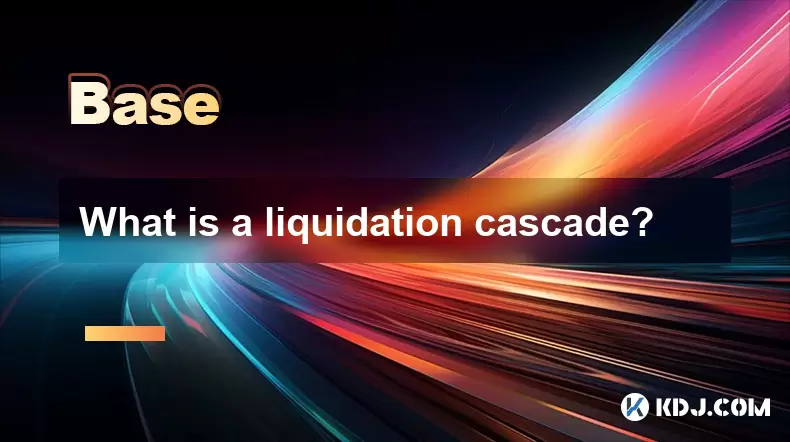
What is a liquidation cascade?
Jul 03,2025 at 07:15am
Understanding the Concept of LiquidationIn the realm of cryptocurrency trading, liquidation refers to the process by which a trader's position is automatically closed due to insufficient funds to maintain the leveraged trade. This typically occurs when the market moves against the trader's position and their account equity falls below the required maint...
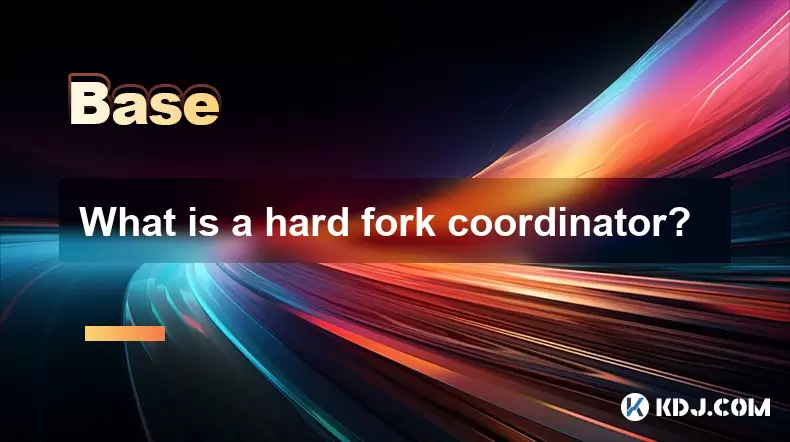
What is a hard fork coordinator?
Jul 03,2025 at 12:42pm
Understanding the Role of a Hard Fork CoordinatorIn the world of blockchain and cryptocurrencies, a hard fork coordinator plays a critical role during major network upgrades. A hard fork is a significant change to a blockchain’s protocol that makes previously invalid blocks or transactions valid (or vice versa). This type of upgrade requires all nodes o...
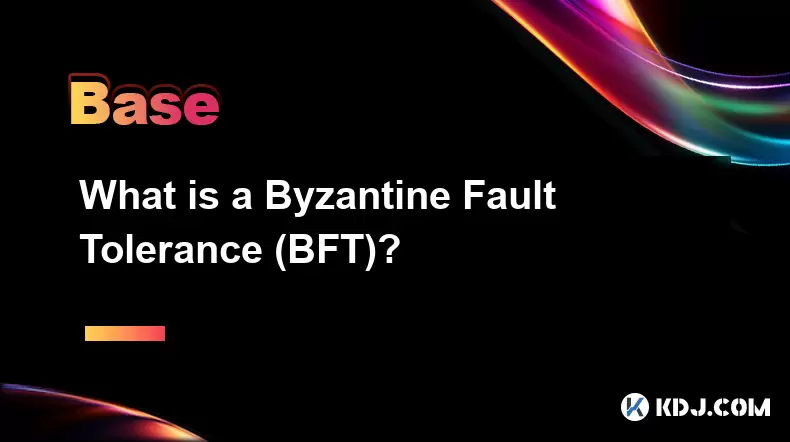
What is a Byzantine Fault Tolerance (BFT)?
Jul 03,2025 at 11:49am
Understanding the Concept of Byzantine Fault ToleranceByzantine Fault Tolerance (BFT) is a critical concept in distributed systems, particularly within the realm of blockchain technology and cryptocurrencies. It refers to the ability of a system to continue functioning correctly even when some components fail or behave maliciously. The term originates f...

What is a subDAO?
Jul 03,2025 at 09:36am
Understanding the Concept of SubDAOA SubDAO, short for Sub-Decentralized Autonomous Organization, is a specialized entity that operates under the umbrella of a larger DAO (Decentralized Autonomous Organization). It functions with its own set of rules, governance mechanisms, and tokenomics while remaining aligned with the overarching goals of the parent ...

What is open interest in derivatives?
Jul 03,2025 at 02:49pm
Understanding Open Interest in DerivativesOpen interest is a critical metric used in the cryptocurrency derivatives market, particularly when analyzing futures and options contracts. It represents the total number of outstanding contracts that have not been settled or closed by either party involved. Unlike trading volume, which counts all trades made i...

What is a CME gap for Bitcoin?
Jul 03,2025 at 05:49pm
Understanding the Concept of a CME GapA CME gap refers to a discrepancy in price between the closing price of Bitcoin on the Chicago Mercantile Exchange (CME) and its opening price when trading resumes. This phenomenon occurs because the CME operates during specific hours, typically aligned with traditional market hours, while cryptocurrency markets ope...

What is a liquidation cascade?
Jul 03,2025 at 07:15am
Understanding the Concept of LiquidationIn the realm of cryptocurrency trading, liquidation refers to the process by which a trader's position is automatically closed due to insufficient funds to maintain the leveraged trade. This typically occurs when the market moves against the trader's position and their account equity falls below the required maint...

What is a hard fork coordinator?
Jul 03,2025 at 12:42pm
Understanding the Role of a Hard Fork CoordinatorIn the world of blockchain and cryptocurrencies, a hard fork coordinator plays a critical role during major network upgrades. A hard fork is a significant change to a blockchain’s protocol that makes previously invalid blocks or transactions valid (or vice versa). This type of upgrade requires all nodes o...

What is a Byzantine Fault Tolerance (BFT)?
Jul 03,2025 at 11:49am
Understanding the Concept of Byzantine Fault ToleranceByzantine Fault Tolerance (BFT) is a critical concept in distributed systems, particularly within the realm of blockchain technology and cryptocurrencies. It refers to the ability of a system to continue functioning correctly even when some components fail or behave maliciously. The term originates f...

What is a subDAO?
Jul 03,2025 at 09:36am
Understanding the Concept of SubDAOA SubDAO, short for Sub-Decentralized Autonomous Organization, is a specialized entity that operates under the umbrella of a larger DAO (Decentralized Autonomous Organization). It functions with its own set of rules, governance mechanisms, and tokenomics while remaining aligned with the overarching goals of the parent ...
See all articles

























































































